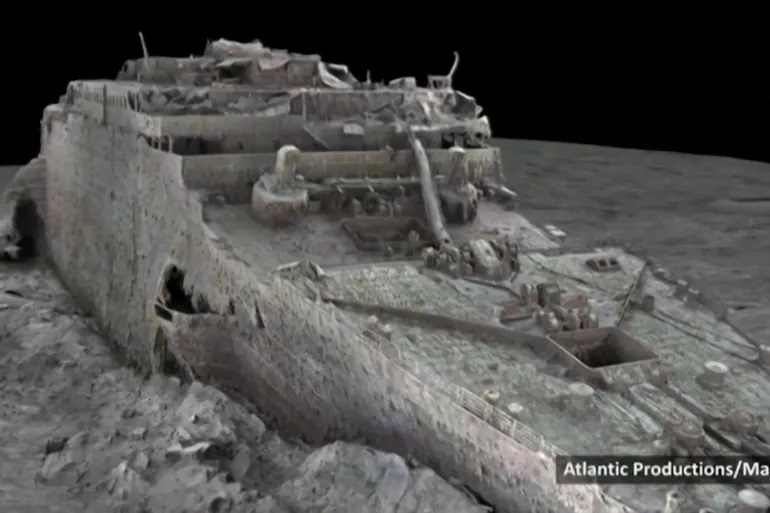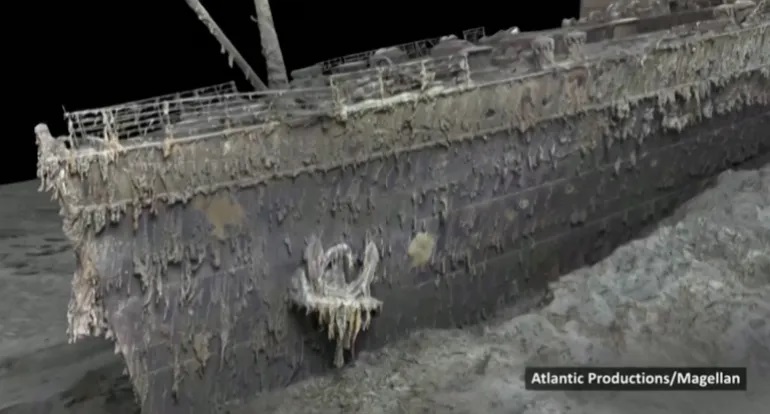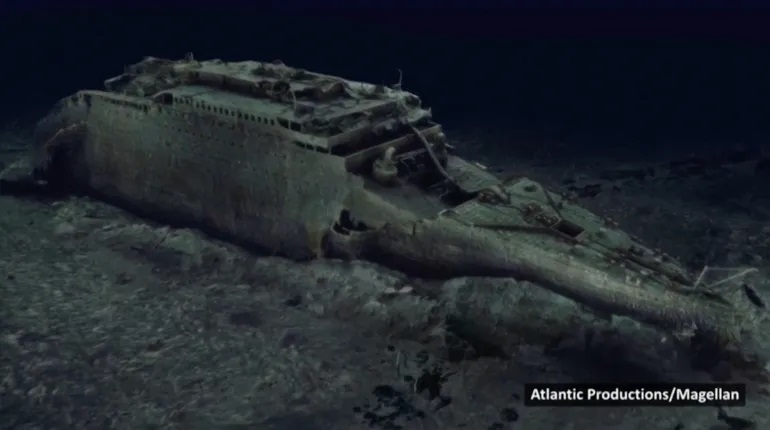
This is considered the largest underwater imaging project in history. Photo: Reuters
The wreck of the ill-fated Titanic has been fully documented for the first time as part of what researchers are calling "the largest underwater imaging project in history".
The first full-size 3D scan of the Titanic's sinking, released on May 17, could also reveal more details about the ship's fateful journey across the Atlantic more than a century ago.
The model was created using deep-sea mapping technology that combined more than 700,000 scans of the Titanic wreck and built up a never-before-seen image of the sunken ship that lies forever at a depth of 3,800m below the ocean floor.

Many details were discovered for the first time while carrying out this project. Photo: Reuters
The high-resolution images have recreated the legendary shipwreck in the most detailed way yet. Scientists involved in the project described it as a “game changer”, providing many details known for the first time to “completely rewrite” our understanding of the disaster.
Scientists said the research was conducted without interfering with the wreck.
The shipwreck has been extensively explored since it was first discovered in 1985 at a site about 650km off the coast of Newfoundland, Canada, but it has never been possible to photograph the entire ship.
The reconstruction of the ship is being carried out in 2022 by deep-sea mapping company Magellan Ltd and Atlantic Productions, which is making a documentary about the project.
Gerhard Seiffert, head of the expedition programme, said they were not allowed to touch anything "so as not to damage the wreck".
The new scans could help historians and scientists shed more light on exactly what happened to the ship amid a race against time as it slowly disintegrates due to its long stay at the bottom of the ocean.

This could be the 'last witness' to the Titanic disaster. Photo: Reuters
"It allows you to see details in the wreckage that you could never see from a submersible," said Titanic expert Parks Stephenson.
“We finally get to see Titanic without human interpretation, straight from the evidence and data,” Mr Stephenson asserted.
Still, Mr Stephenson said there was “much more to learn” from the wreck, which was “essentially the last surviving witness” to the disaster.
The Titanic sank after hitting an iceberg in the early morning hours of April 15, 1912, during its maiden voyage from Southampton, England to New York City, USA. The tragedy resulted in the deaths of more than 1,500 passengers and continues to be a subject of interest to this day.
Source link






































































































Comment (0)